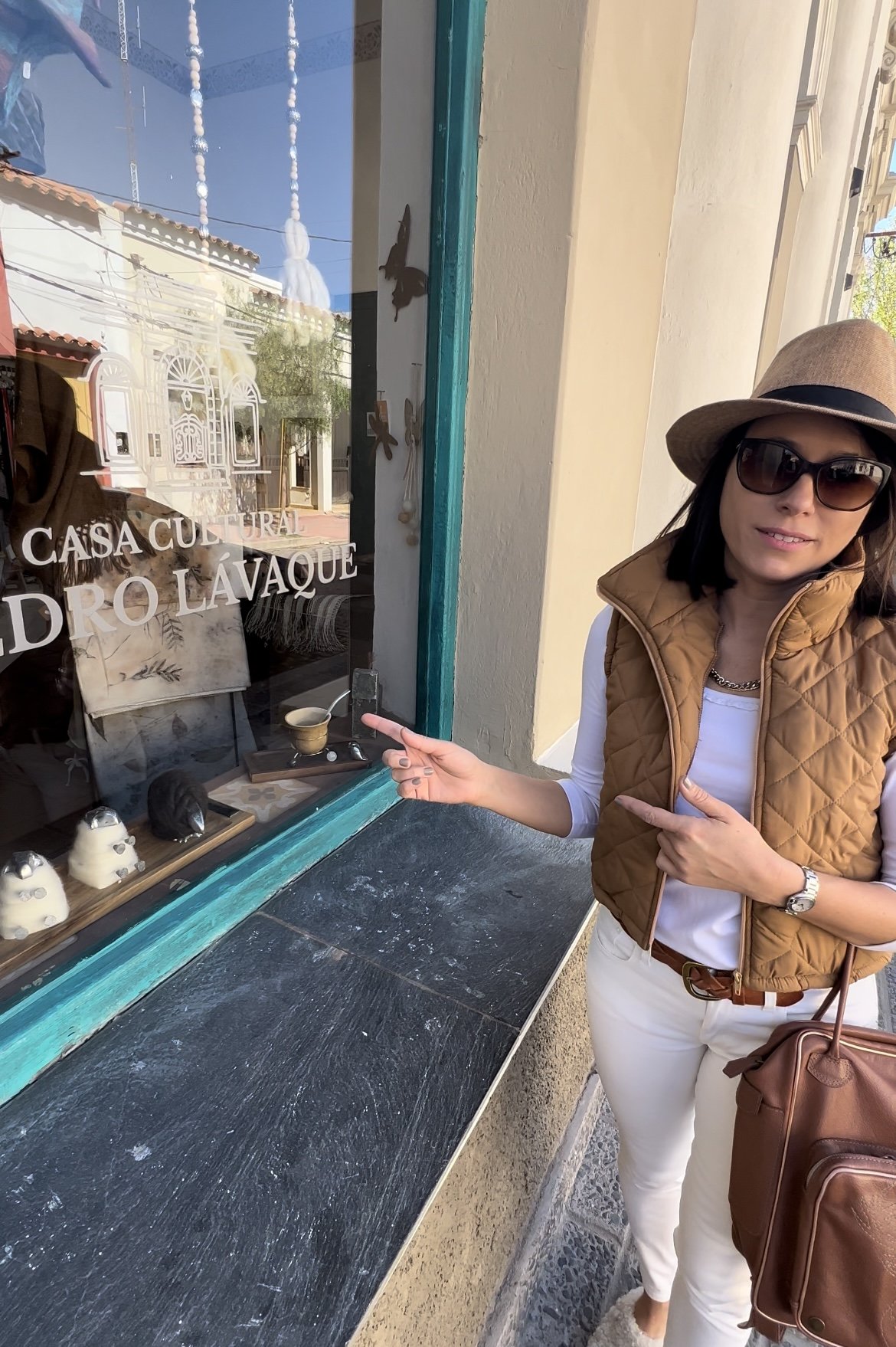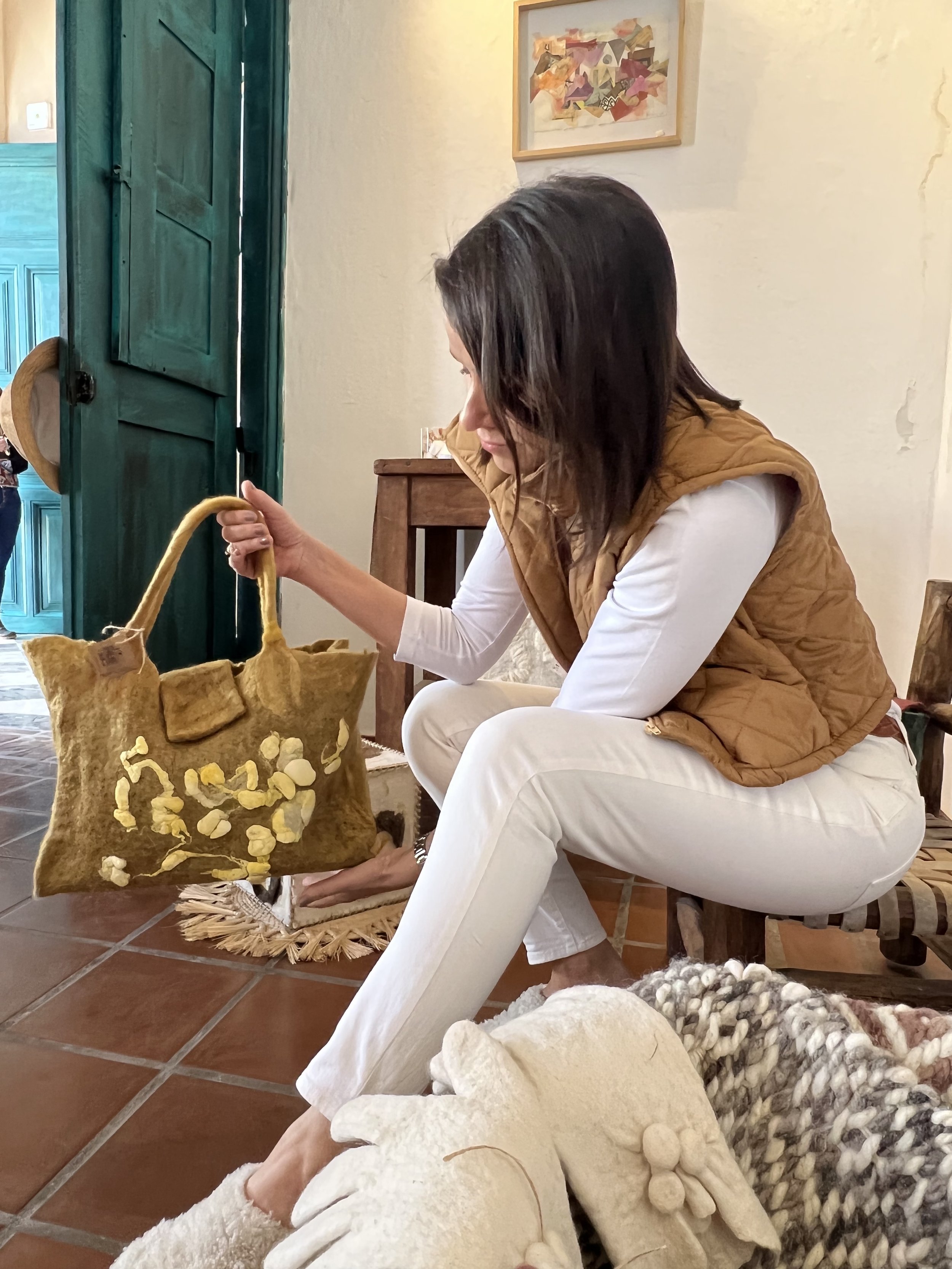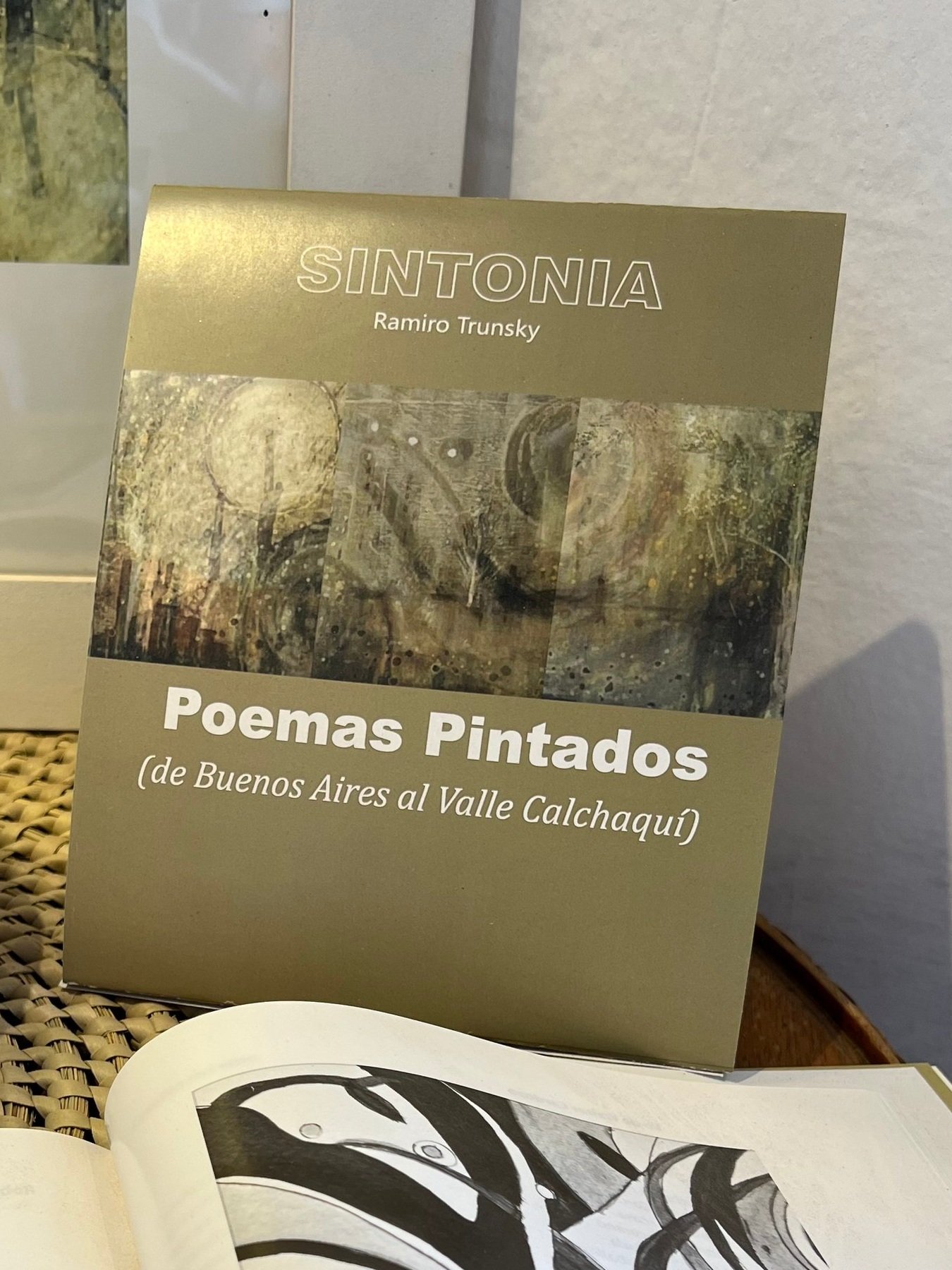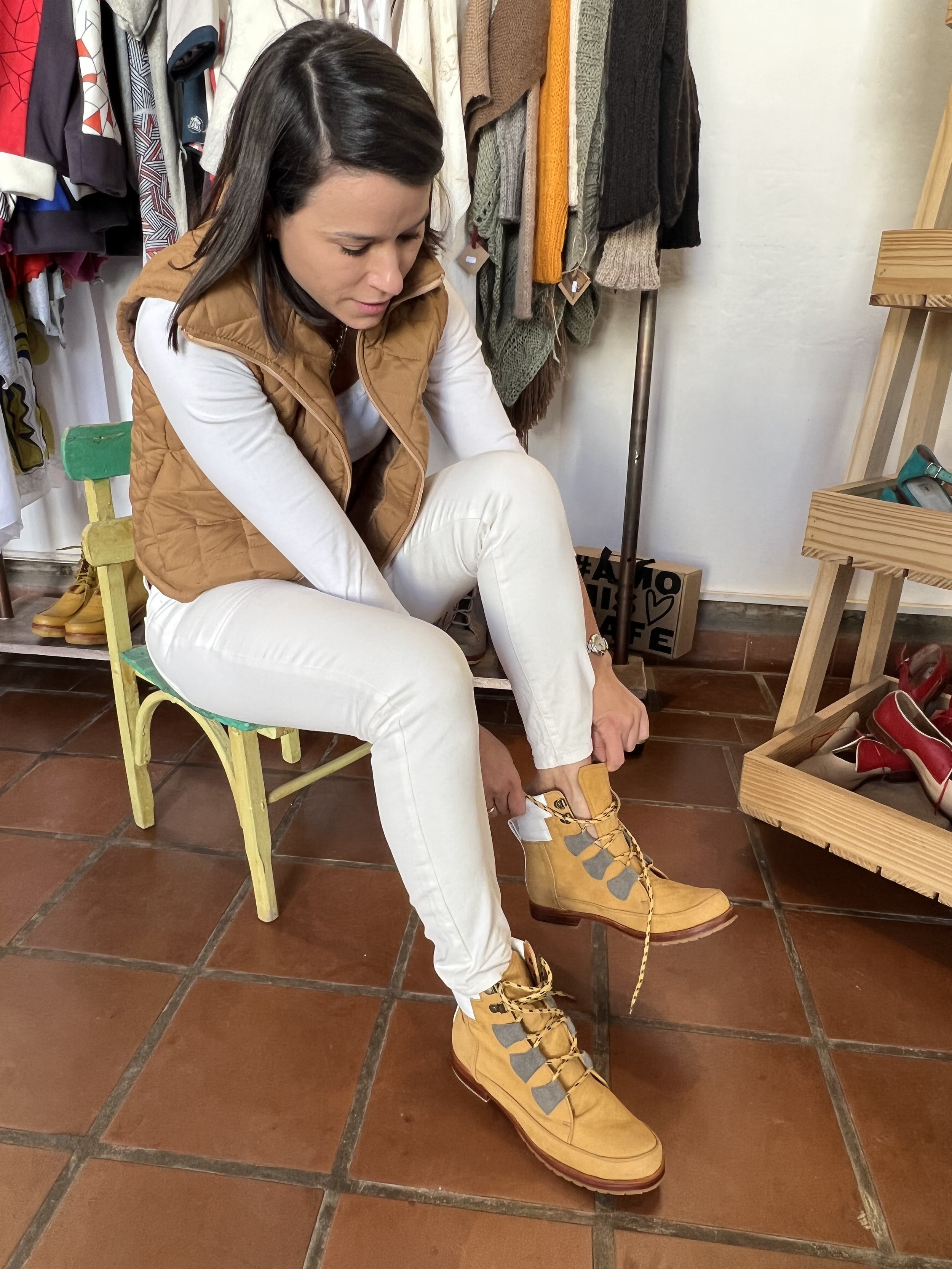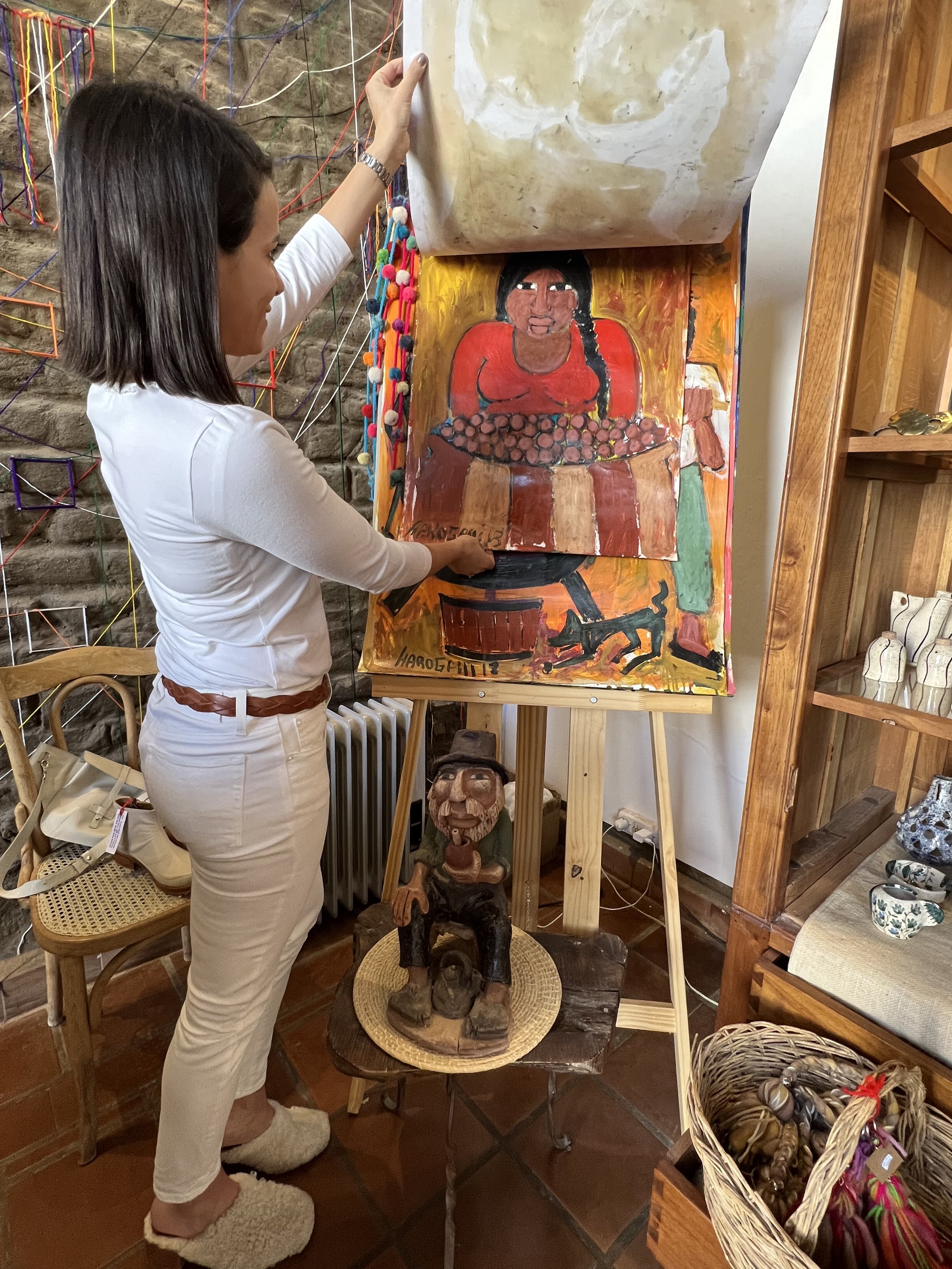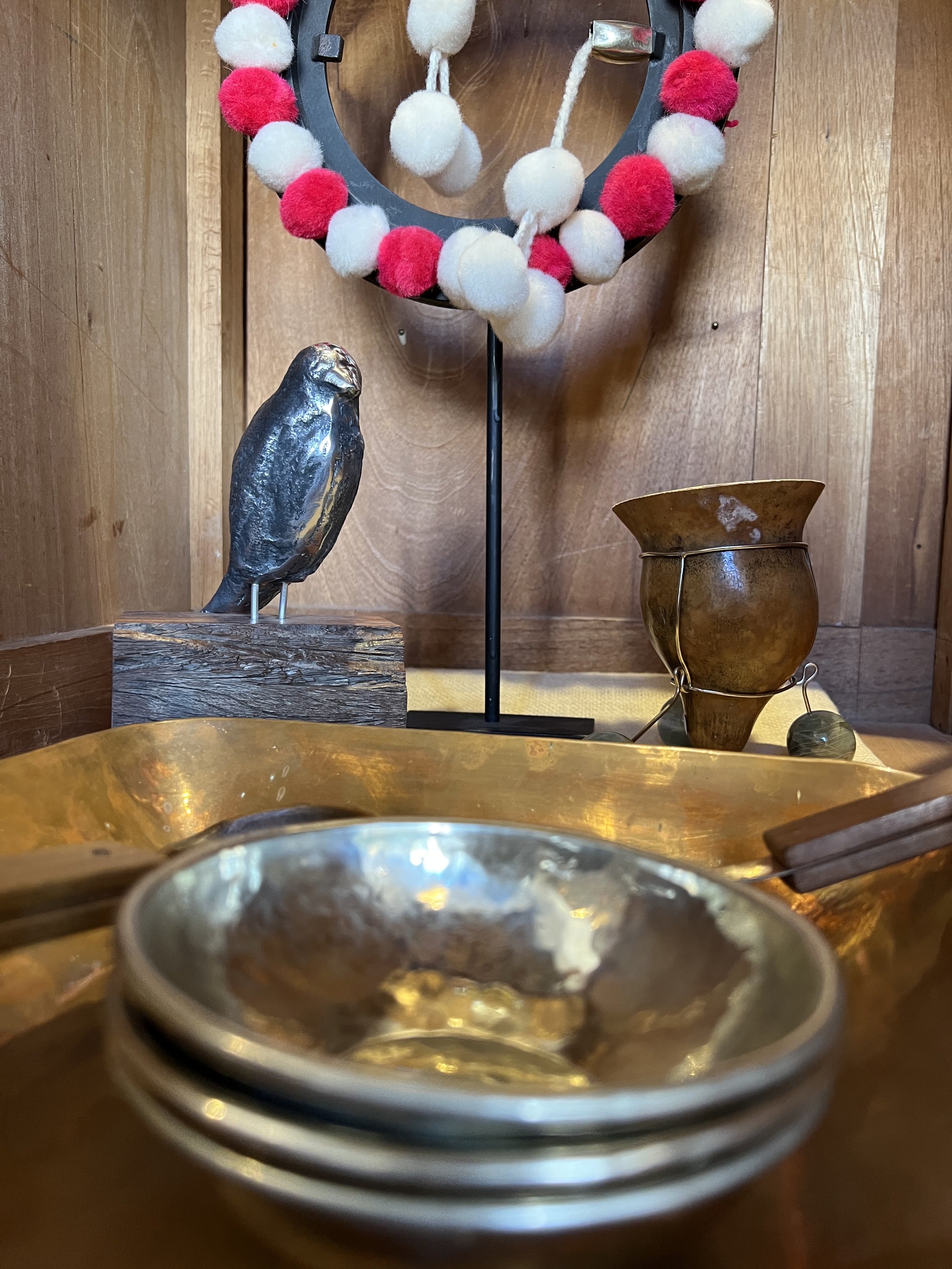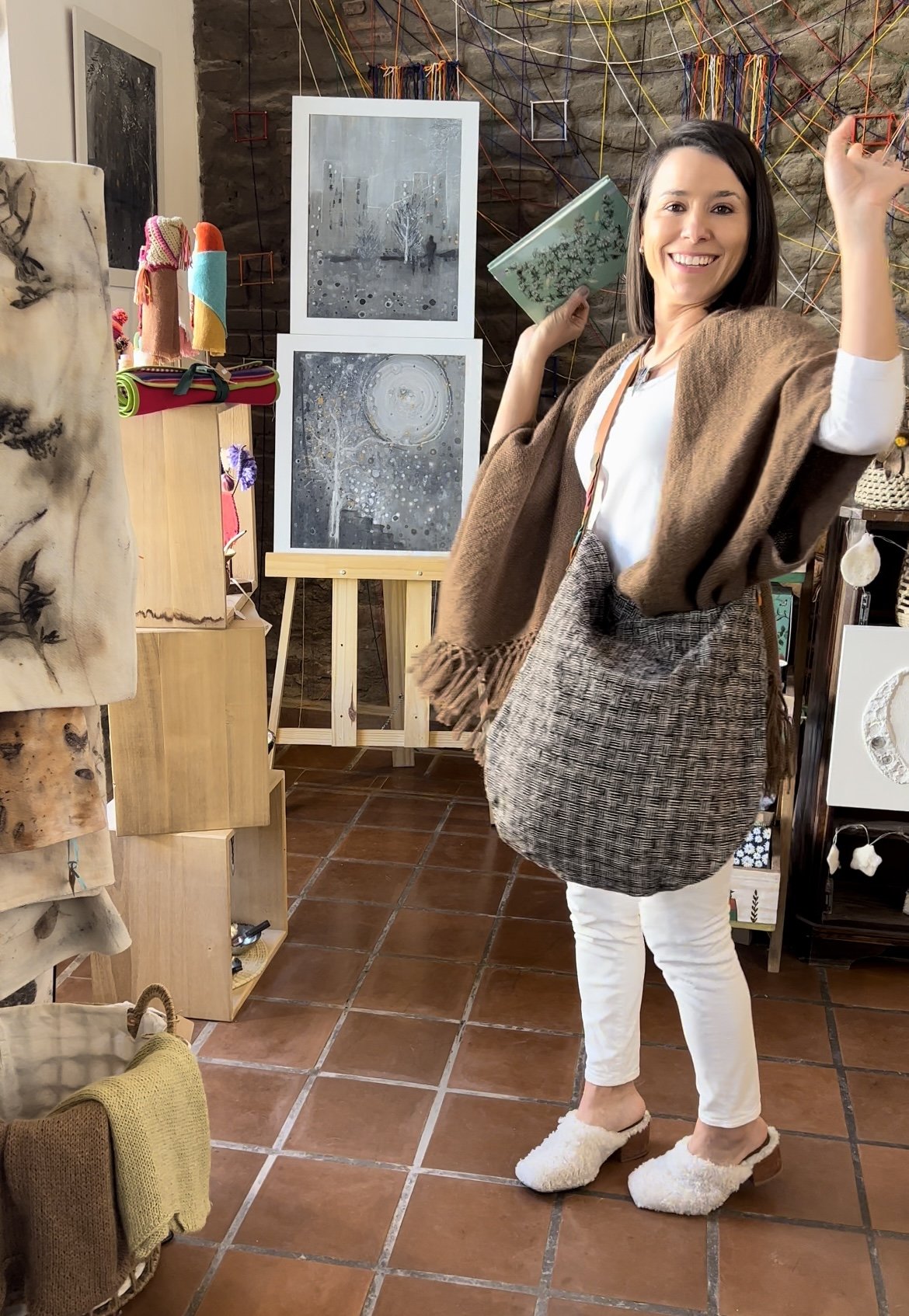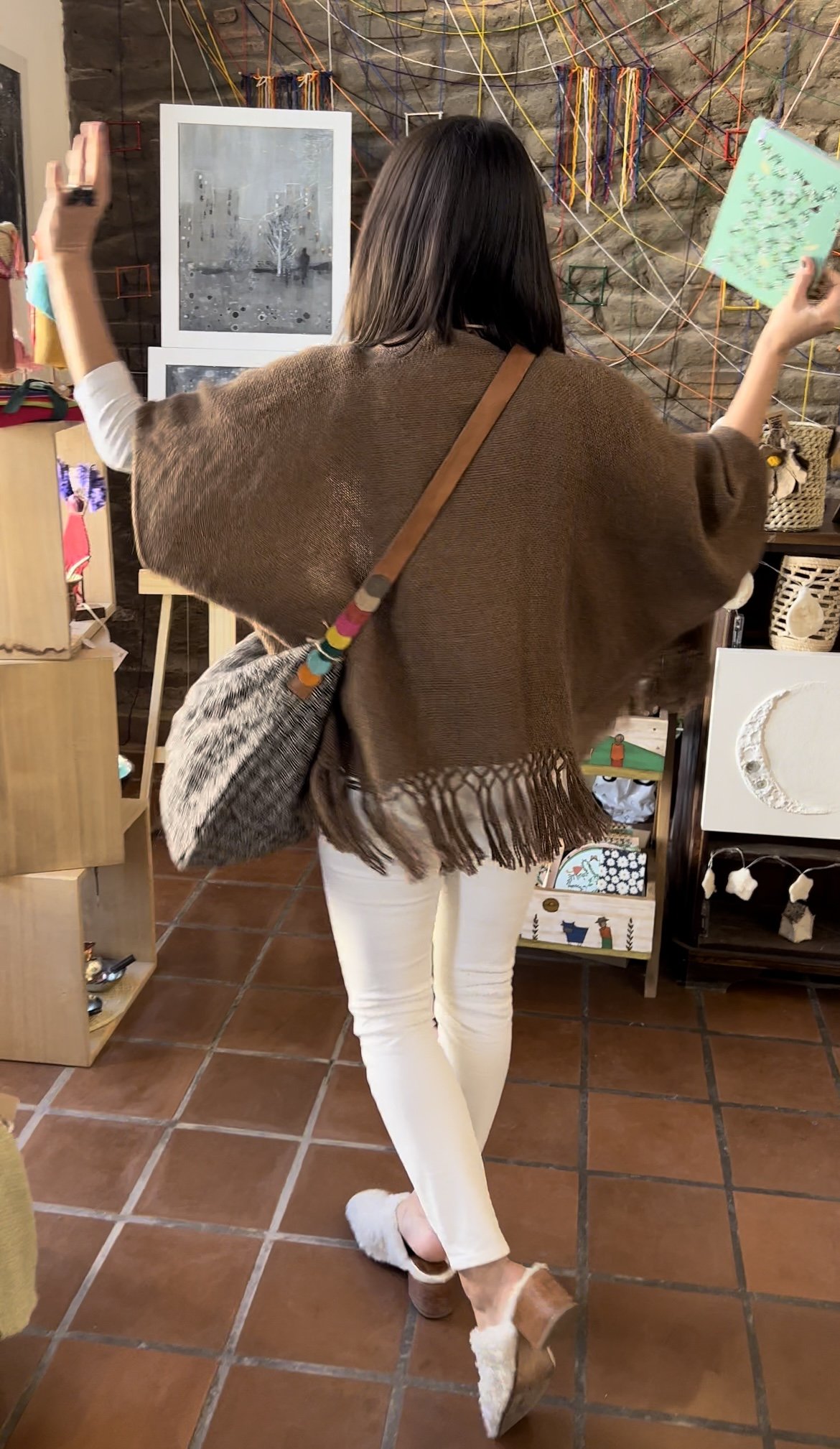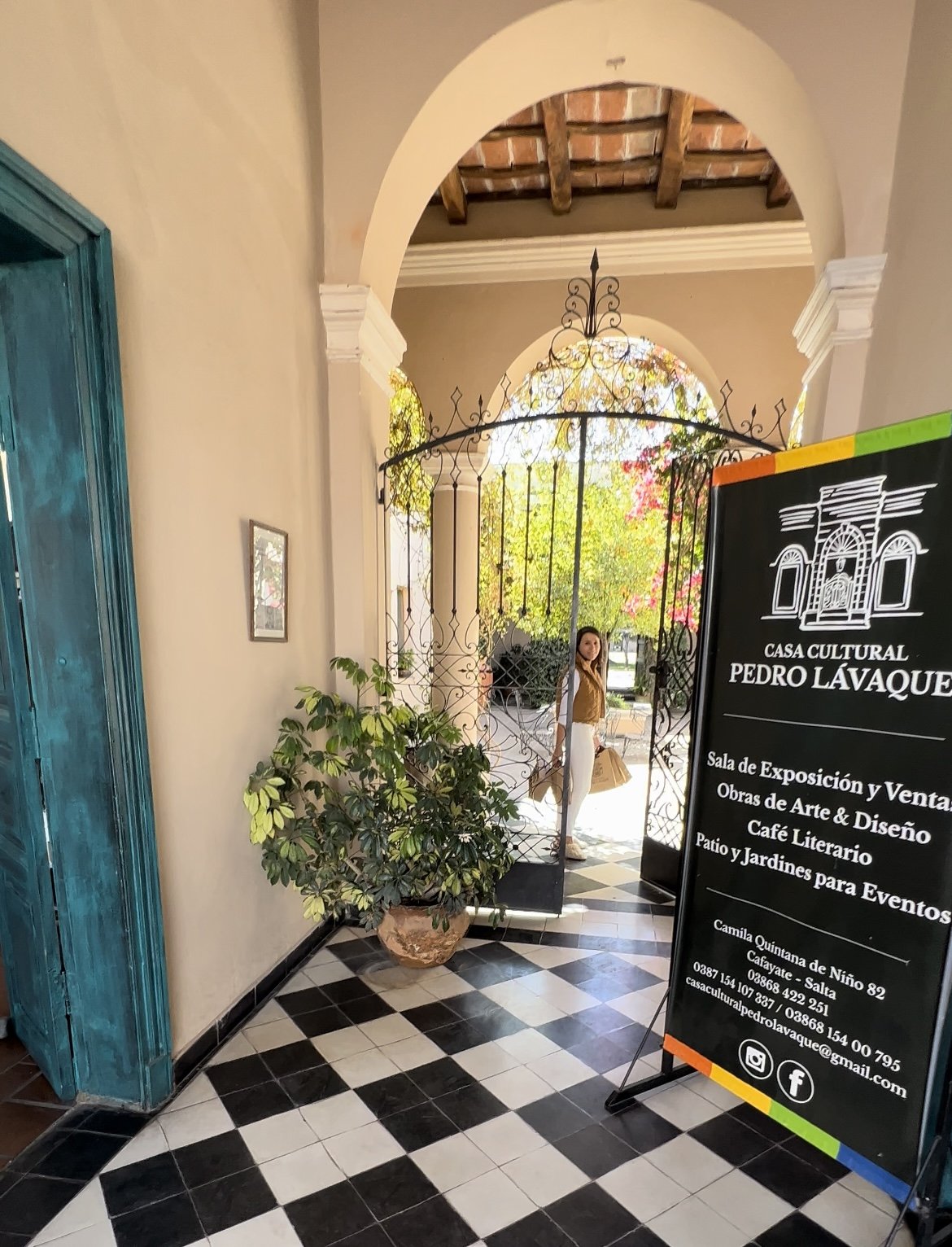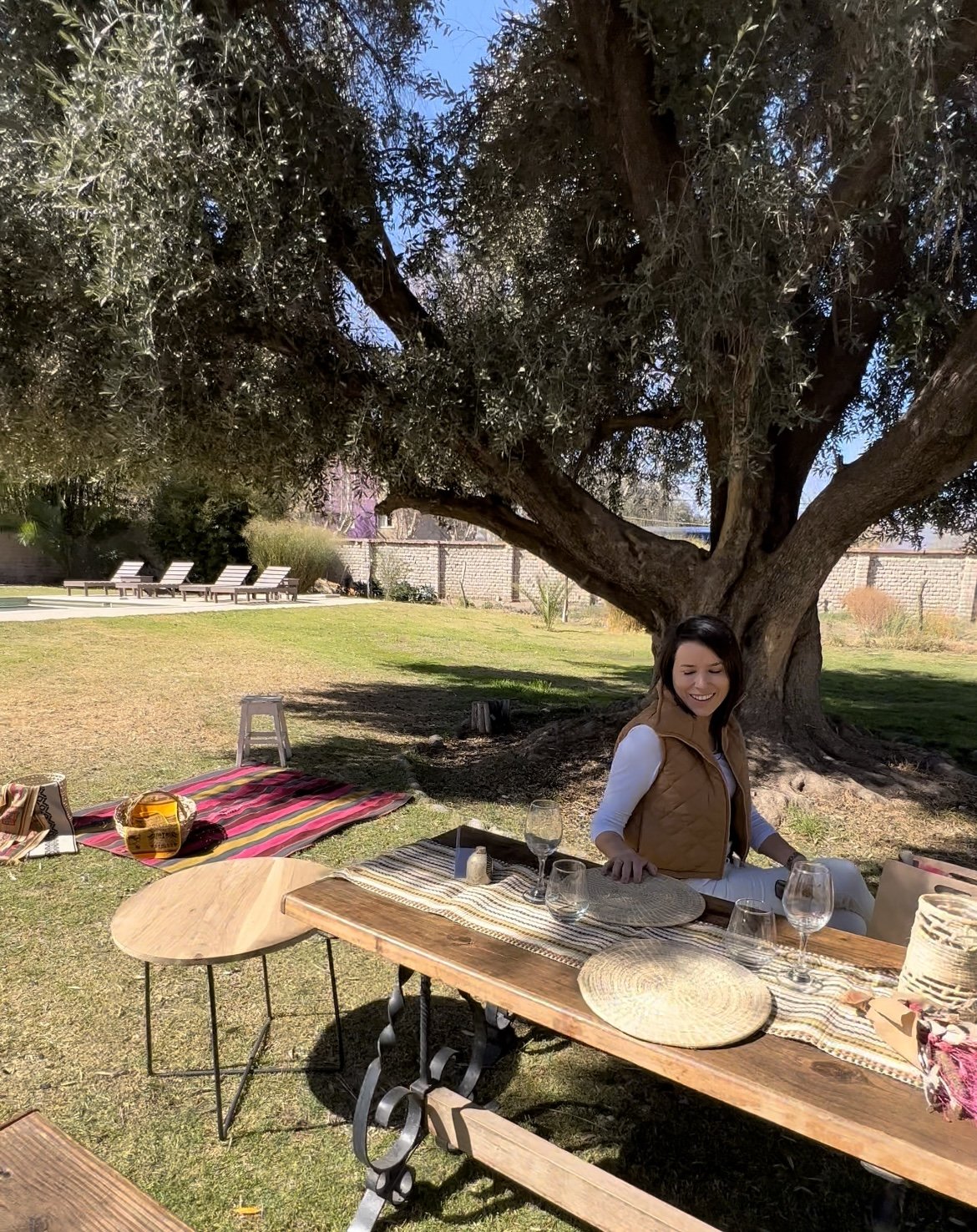Casa Cultural Pedro Lávaque
Art, design and identity in a historic houseOn Camila Quintana de Niño Street, almost on the corner of Silverio Chavarría, a large turquoise door opens onto two showrooms where art and design works are exhibited and sold.
This is the Casa Cultural Pedro Lávaque, an authentic selection of the best handicraft expressions of northern Argentina with an accentuated contemporary approach.
So many times we had spent the night, looking through the windows at the darkness of the closed shop... Finally, one Sunday around noon, we were able to indulge ourselves, when the warm Gaby welcomed us, urging us to discover the treasure contained in those adobe walls.
She knows the roots and history of each artist, as well as the technique and materials of each object exhibited in the house. For the meticulous seeker, it is a great pleasure to learn about the details of each design and, thus, to appreciate even more the creation of each artisan.
In fact, more than a store, Casa Cultural Pedro Lávaque is a curatorship that gathers with elegance and good taste the artistic manufacture not only of the Valleys and the Puna, but also of Salta Chaco and other corners not so visited or promoted.
With an exquisite modern perspective of the traditional essence, the shelves surprise by the abundance of productions: decorative ornaments, ponchos woven in centenary looms, refined sheep sacks, stone or bone jewelry, leather shoes of admirable manufacture...
We were surprised by the textiles of Jesús Casimiro, a plastic artist who works with his own innovative technique that turns the characteristic loom into an avant-garde creation.
Juárez de la Cámara's sheep and animals in metal and raw wool are always a weakness for @tripticity_, as well as the work of Emilio Haro Galli.
In clothing, the earth-colored fabrics, the shoes by Mafe, the bags and purses in dyed felt or the embroidery in the characteristic puneño barracán stand out. Also very beautiful are the bags made in chaguar by the native communities settled on the banks of the Bermejo and Pilcomayo rivers.
Each part forms a very well achieved whole, since the House not only includes design but also other manifestations such as literature, music and painting.
In the artistic corner we discovered, for example, the local bandoneon player Lautaro D' Amico, who rescues the typical sounds of the northern dance tents. In literature it was impossible not to be tempted by the verses of Ramiro Trunsky. Also a musician, the first edition of his book Sintonía is beautifully illustrated with creations by Eva Marcon.
Ramiro is the great-grandson of Pedro Lávaque and together with his wife, architect Paola Marcon, they were the ones who designed Casa Cultural. They are curious, pioneers and, at the same time, patrons of so many virtuous hands, following in the footsteps of Doralba Trunsky, who some time ago created, in the inherited house, a center for the revaluation of the culture and identity of the region.
By the way, her work is concentrated in a historical construction: it is a large and beautiful colonial residence with high and painted ceilings. It was the home of Pedro Fortunato Lávaque, a Lebanese immigrant who settled in Cafayate at the end of the 19th century. A chronicle in a local newspaper, on the occasion of the centenary of his birth, describes him as the pioneer of Cafayate's progress, which is why the City Hall paid him a "just tribute" with the unveiling of a commemorative plaque and a mass in his name.
Therefore, Gaby -the attentive social communicator who knows a lot about design- invited us to visit the adjoining patio with an Andalusian style, where events are held upon request. Then we visited the huge garden of the Vieja Posada.
The shade of a centenary olive tree became the perfect place to enjoy a glamorous lunch led by Juan Foglia, manager of the inn, and Ana, future sommelier in charge of La Despensa. In how many places in Salta will it be possible to enjoy a banquet under such a beautiful tree? Besides Hacienda de Molinos' molle courtyard, we believe that in no other... As Ramiro describes it:
"That olive treedeserves a song. A poem to name it, a true memory that reflects what it has been,what it is, what it will be ”.Under its shade, an oasis of serenity one block from the main square, we enjoyed tamales, meat and quinoa empanadas, pickles, a fresh pear and ricotta salad and a snack, all in the excellent company of an outstanding wine, in our case an authentic Cafayateño made by Chavo Figueroa, the Gualiama Oak Aged, a reserve Malbec made with a manual press and aged in oak for twelve months.
For dessert, a chilled glass of Stutz Torrontés Tardío was ideal, which went wonderfully with a brownie and almond ice cream.
This glorious lunch was the perfect closure after the visit and the shopping at Casa Cultural Pedro Lávaque. Since Cafayate is a city closely related to folklore and tradition, when you enter there you feel like you are visiting a design store in Milan, New York or any city in Scandinavia, but of course, with the pride of finding and feeling our northern traces.
@tripticity_ values these cultural gems and even more to find them in the always surprising and revered Cafayate.




